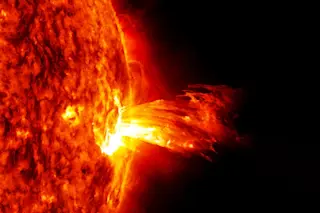A blast of particles from the sun called a coronal mass ejection, or CME, is seen at the right of this image taken on Nov. 22 by the STEREO-A spacecraft. (The sun is not actually visible.) Comet Ison is at the extreme left of the image. A smaller comet, Encke, is also visible, as is Mercury and the Earth. It is not known for sure whether this CME actually hit Ison. But the image does provide a sense of the increasingly violent environment the comet is encountering as it comes ever closer to the sun. (Source: Karl Battams/NRL/NASA-CIOC) I've been closely following NASA's status reports about Comet Ison, which is three days out from its expected closest approach to the sun. And the latest report raises the possibility that the answer to the question posed in the headline is, well, "maybe." Karl Battams, an astrophysicist and computational scientist based at ...
Is Comet Ison Kaput?
Explore the latest Comet Ison updates as it nears the sun under the scrutiny of NASA's observing campaign and potential CME impacts.
More on Discover
Stay Curious
SubscribeTo The Magazine
Save up to 40% off the cover price when you subscribe to Discover magazine.
Subscribe












